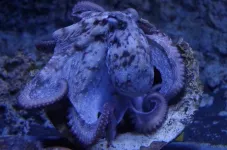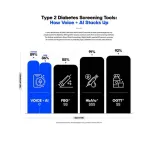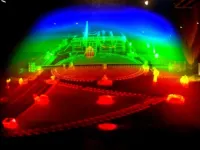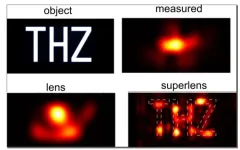(Press-News.org) Octopuses are fascinating animals – and serve as important model organisms in neuroscience, cognition research and developmental biology. To gain a deeper understanding of their biology and evolutionary history, validated data on the composition of their genome is needed, which has been lacking until now. Scientists from the University of Vienna together with an international research team have now been able to close this gap and, in a study, determined impressive figures: 2.8 billion base pairs - organized in 30 chromosomes. What sounds so simple is the result of complex, computer-assisted genome analyses and comparisons with the genomes of other cephalopod species. This groundbreaking research has just been published in the renowned journal G3: Genes / Genomes / Genetics.
Octopuses, together with squid and cuttlefish, belong to a group of coleoid cephalopods consisting of several hundreds of species that are characterized by highly diversified lifestyles, body structure and adaptations to their environment. The study of these animals looks back on a long tradition, especially since the neuronal plasticity of the octopus brain – meaning the brain's ability to change and adapt as you learn and experience new things – provides evidence for the existence of functionally analogous structures to the brains of mammals. This is making them a comparative model group for neurophysiological studies. Also, their ability to regenerate parts of their bodies as well as the rapid changes of their body patterns, which are important for camouflage and communication, make octopuses a popular research subject for studying how these innovative traits arose – and how they have changed – during evolution.
Closing a gap
In the research community there has been a rising need for detailed knowledge on cephalopod genomes to understand the evolution of their unique traits and their biology. An important contribution to this aim is encoding the common octopus’ genome at chromosome level – an information that has not been available until now. This has now been remedied by a research team from the University of Vienna, which – together with colleagues from the KU Leuven (Belgium), the Centro Nacional de Análisis Genómico (CNAG; Spain) and the Stazione Zoologica Anton Dohrn (Italy) – "supplied" the missing data and carried out extensive, molecular biological and computer-assisted studies of the octopus genome. "With our current technologies used in genomics research, we were able to create a kind of "genome map" for the octopus, showing how genetic information is arranged at the chromosome level," explains study first author Dalila Destanović, a scientist at the Simakov Laboratory in the Department of Neuroscience and Developmental Biology at the University of Vienna. This reference genome, which is highly resolved at the chromosome level, will allow the scientific community to better understand the characteristics and biology of these fascinating animals on the one hand, and also to trace the evolutionary history of Octopus vulgaris on the other. Research teams can now further investigate or understand the evolutionary trajectory of coleoid cephalopods and more distantly related molluscs such as clams or snails.
2.8 billion base pairs – 30 chromosomes
In fact, the researchers were able to identify 30 chromosomes in the Octopus vulgaris genome, in which 99.34% of 2.8 billion base pairs are arranged. This means that scientists now have a high-quality reference sequence that will serve as a basis for further studies on the function of genes and thus for a better understanding of biological properties of the common octopus. The chromosomal structure of the Octopus vulgaris genome will also provide insight into the dynamic evolutionary history of these organisms by estimating chromosome rearrangement rates. Already, by comparing the Octopus vulgaris genome with the genomes of four other octopus species, the researchers have been able to show that all chromosomes exhibit numerous structural changes that have occurred during evolution by breaking off pieces of chromosomes, rearranging them and reconnecting them at the same chromosome. "Even among closely related species, we observed numerous structural changes of the chromosomes. This finding poses questions on genome dynamics throughout their evolutionary history and opens the door to investigate how this relates to their unique traits", explains Dalila Destanović. The dynamic evolutionary history of the octopus genome spans a period of 44 million years – and many exciting research questions are still open. The results of the current study will amount to answering some of these questions by bridging traditional Octopus vulgaris research in neurobiology, behavior and development to molecular genetic insights in these areas.
END
New insights into the genetics of the common octopus: genome at the chromosome level decoded
Scientific milestone provides deeper insights into the evolution and biology of Octopus vulgaris
2023-10-18
ELSE PRESS RELEASES FROM THIS DATE:
Researchers unveil fire-inhibiting nonflammable gel polymer electrolyte for lithium-ion batteries
2023-10-18
A collaborative research team, led by Professor Hyun-Kon Song in the School of Energy and Chemical Engineering at UNIST, Dr. Seo-Hyun Jung from Research Center for Advanced Specialty Chemicals at Korea Research Institute of Chemical Technology (KRICT), and Dr. Tae-Hee Kim from the Ulsan Advanced Energy Technology R&D Center at Korea Institute of Energy Research (KIER), has achieved a groundbreaking milestone in battery technology. Their remarkable achievement in developing a non-flammable gel polymer electrolyte (GPE) is set to revolutionize the safety of lithium-ion batteries (LIBs) by ...
Test of police implicit bias training shows modest improvements
2023-10-18
SPOKANE, Wash. – A two-part training designed to help police officers recognize their implicit bias, revealed some behavior improvement and lowered citizen discrimination complaints in a controlled study. While a small study involving one police department, it is the first-known research to provide evidence that this type of training can produce positive behavioral effects.
Led by Washington State University researcher Lois James, the study found some improvement in the anti-bias trained officers’ behavior toward homeless people in particular, ...
Wearable device makes memories and powers up with the flex of a finger
2023-10-18
Researchers have invented an experimental wearable device that generates power from a user’s bending finger and can create and store memories, in a promising step towards health monitoring and other technologies.
The innovation features a single nanomaterial incorporated into a stretchable casing fitted to a person’s finger. The nanomaterial enabled the device to generate power with the user bending their finger.
The super-thin material also allows the device to perform memory tasks, as outlined below.
Multifunctional devices normally require several materials in layers, which involves the time-consuming challenge of stacking nanomaterials with high precision.
The team, led ...
AI and 10 seconds of voice can screen for diabetes, new study reveals
2023-10-18
Determining whether a person is diabetic could be as easy as having them speak a few sentences into their smartphone, according to a groundbreaking study from Klick Labs that combines voice technology with artificial intelligence in a major step forward in diabetes detection.
The new study, published in Mayo Clinic Proceedings: Digital Health, outlines how scientists used six to 10 seconds of people’s voice, along with basic health data, including age, sex, height, and weight, to create an AI model ...
AI identifies antimalarial drug as possible osteoporosis treatment
2023-10-18
Correction (Oct. 17, 2023): The paper’s title has been corrected to “Deep Learning-Predicted Dihydroartemisinin Rescues Osteoporosis by Maintaining Mesenchymal Stem Cell Stemness through Activating Histone 3 Lys 9 Acetylation
Artificial intelligence has exploded in popularity and is being harnessed by some scientists to predict which molecules could treat illnesses, or to quickly screen existing medicines for new applications. Researchers reporting in ACS Central Science have used one such deep learning algorithm, and found that dihydroartemisinin ...
Simplifying the generation of three-dimensional holographic displays
2023-10-18
Holograms that offer a three-dimensional (3D) view of objects provide a level of detail that is unattainable by regular two-dimensional (2D) images. Due to their ability to offer a realistic and immersive experience of 3D objects, holograms hold enormous potential for use in various fields, including medical imaging, manufacturing, and virtual reality. Holograms are traditionally constructed by recording the three-dimensional data of an object and the interactions of light with the object. However, this technique is computationally highly intensive as it requires ...
Superlensing without a super lens: physicists boost microscopes beyond limits
2023-10-18
Ever since Antonie van Leeuwenhoek discovered the world of bacteria through a microscope in the late seventeenth century, humans have tried to look deeper into the world of the infinitesimally small.
There are, however, physical limits to how closely we can examine an object using traditional optical methods. This is known as the ‘diffraction limit’ and is determined by the fact that light manifests as a wave. It means a focused image can never be smaller than half the wavelength of light used to observe an object.
Attempts to break this limit with “super lenses” have all hit the hurdle of extreme visual losses, making the lenses opaque. ...
Collaborative study focuses on using computer algorithms to find molecular adaptations to improve COVID-19 drugs
2023-10-18
As the COVID-19 pandemic scattered and isolated people, researchers across Virginia Tech connected for a data-driven collaboration seeking improved drugs to fight the disease and potentially many other illnesses.
A multidisciplinary collaboration spanning several colleges at Virginia Tech resulted in a newly published study, “Data Driven Computational Design and Experimental Validation of Drugs for Accelerated Mitigation of Pandemic-like Scenarios,” in the Journal of Physical Chemistry Letters.
The study focuses on using computer algorithms to generate adaptations to ...
Study predicts potential for 110% electricity increases in U.S. urban buildings
2023-10-18
A research study led by University of Oklahoma assistant professor Chenghao Wang and recently published in the journal Nature Communications tackled the critical issue of how city-scale building energy consumption in urban environments will evolve under the influence of climate change.
Fossil fuels account for approximately 40% of all building energy use in urban city centers in the United States, and the U.S. Energy Information Administration reports that residential and commercial buildings in U.S. cities are one of the major energy ...
Open access: Need to move away from transformative agreements
2023-10-18
Sweden is far ahead when it comes to promoting open access to scholarly publications. But there is risk of getting stuck in a permanent transformation that favours large commercial publishers. A new report from the Association of Swedish Higher Education Institutions develops a strategy on how to work in negotiations with the publishers.
In 2021, the Association of Swedish Higher Education Institutions (Sveriges universitets- och högskoleförbund, SUHF) convened a “Beyond transformative agreements” working group (the BTA group) to lay the foundation for further advancing the transition to open access. Now, the group ...
LAST 30 PRESS RELEASES:
Interaction of climate change and human activity and its impact on plant diversity in Qinghai-Tibet plateau
From addressing uncertainty to national strategy: an interpretation of Professor Lim Siong Guan’s views
Clinical trials on AI language model use in digestive healthcare
Scientists improve robotic visual–inertial trajectory localization accuracy using cross-modal interaction and selection techniques
Correlation between cancer cachexia and immune-related adverse events in HCC
Human adipose tissue: a new source for functional organoids
Metro lines double as freight highways during off-peak hours, Beijing study shows
Biomedical functions and applications of nanomaterials in tumor diagnosis and treatment: perspectives from ophthalmic oncology
3D imaging unveils how passivation improves perovskite solar cell performance
Enriching framework Al sites in 8-membered rings of Cu-SSZ-39 zeolite to enhance low-temperature ammonia selective catalytic reduction performance
AI-powered RNA drug development: a new frontier in therapeutics
Decoupling the HOR enhancement on PtRu: Dynamically matching interfacial water to reaction coordinates
Sulfur isn’t poisonous when it synergistically acts with phosphine in olefins hydroformylation
URI researchers uncover molecular mechanisms behind speciation in corals
Chitin based carbon aerogel offers a cleaner way to store thermal energy
Tracing hidden sources of nitrate pollution in rapidly changing rural urban landscapes
Viruses on plastic pollution may quietly accelerate the spread of antibiotic resistance
Three UH Rainbow Babies & Children’s faculty elected to prestigious American Pediatric Society
Tunnel resilience models unveiled to aid post-earthquake recovery
Satellite communication systems: the future of 5G/6G connectivity
Space computing power networks: a new frontier for satellite technologies
Experiments advance potential of protein that makes hydrogen sulfide as a therapeutic target for Alzheimer’s disease
Examining private equity’s role in fertility care
Current Molecular Pharmacology achieves a landmark: real-time CiteScore advances to 7.2
Skeletal muscle epigenetic clocks developed using postmortem tissue from an Asian population
Estimating unemployment rates with social media data
Climate policies can backfire by eroding “green” values, study finds
Too much screen time too soon? A*STAR study links infant screen exposure to brain changes and teen anxiety
Global psychiatry mourns Professor Dan Stein, visionary who transformed mental health science across Africa and beyond
KIST develops eco-friendly palladium recovery technology to safeguard resource security
[Press-News.org] New insights into the genetics of the common octopus: genome at the chromosome level decodedScientific milestone provides deeper insights into the evolution and biology of Octopus vulgaris










